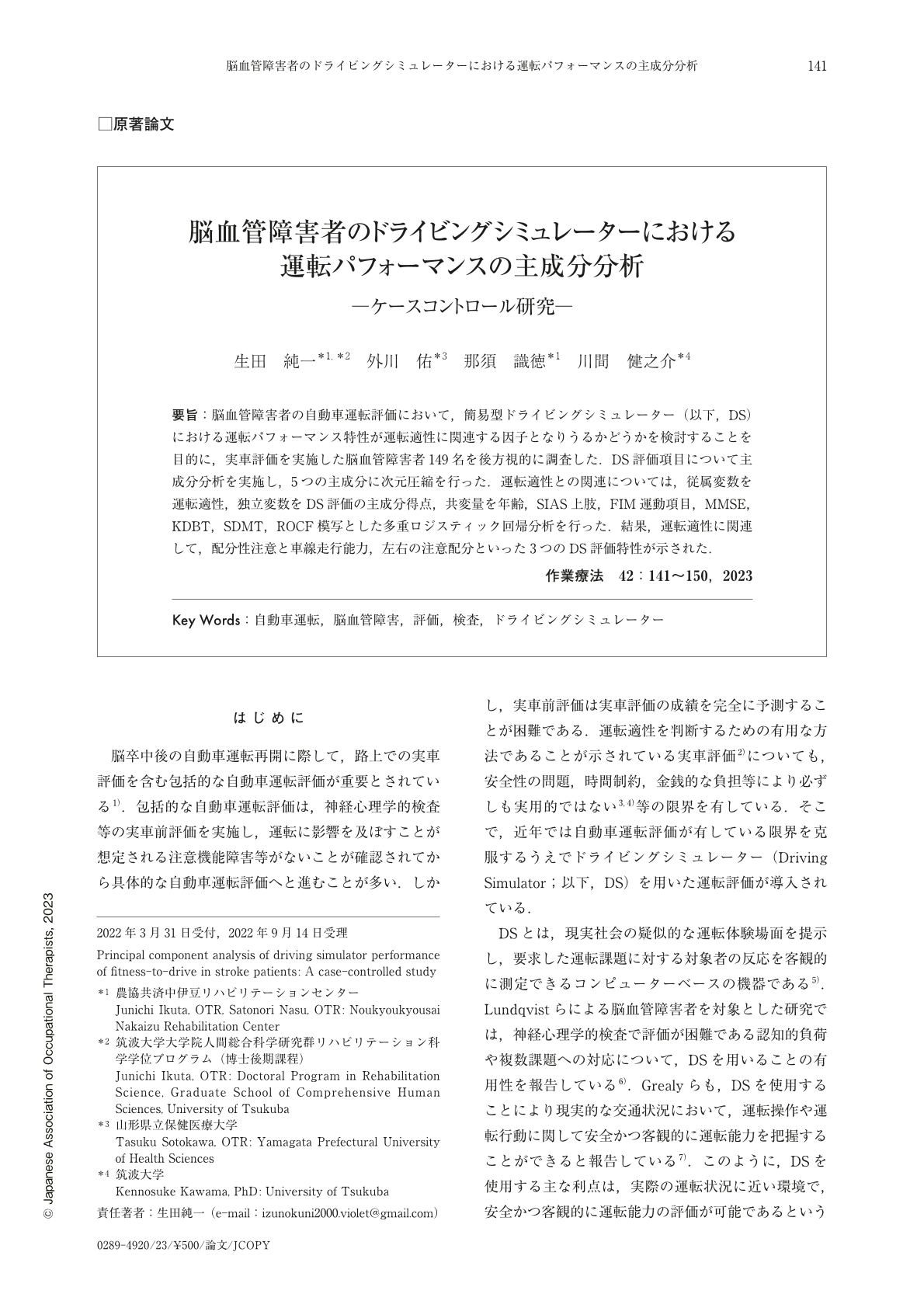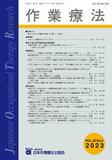Japanese
English
- 販売していません
- Abstract 文献概要
- 1ページ目 Look Inside
- 参考文献 Reference
要旨:脳血管障害者の自動車運転評価において,簡易型ドライビングシミュレーター(以下,DS)における運転パフォーマンス特性が運転適性に関連する因子となりうるかどうかを検討することを目的に,実車評価を実施した脳血管障害者149名を後方視的に調査した.DS評価項目について主成分分析を実施し,5つの主成分に次元圧縮を行った.運転適性との関連については,従属変数を運転適性,独立変数をDS評価の主成分得点,共変量を年齢,SIAS上肢,FIM運動項目,MMSE,KDBT,SDMT,ROCF模写とした多重ロジスティック回帰分析を行った.結果,運転適性に関連して,配分性注意と車線走行能力,左右の注意配分といった3つのDS評価特性が示された.
This study aimed to examine whether driving performance in simplified driving simulator assessments could be related to fitness-to-drive in evaluating driving by post-stroke patients. The study was conducted on 149 stroke patients whose fitness-to-drive had been evaluated by on-road assessment. Principal component analyses were performed for driving simulator assessment items and compressed into five principal components. For the relationship with fitness-to-drive, multiple logistic regression analysis was performed with fitness-to-drive as the dependent variable, PC scores of driving simulator assessment as the independent variable, and age, FIM-M, MMSE, KDBT, SDMT, ROCF, and SIAS-U/E as covariates. The results pointed to three driving simulator assessment characteristics related to fitness-to-drive: distributive attention, lane driving ability, and left-right attention distribution.

Copyright © 2023, Japanese Association of Occupational Therapists. All rights reserved.


